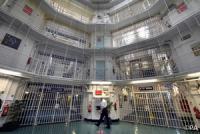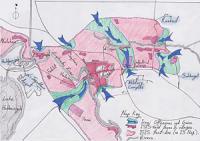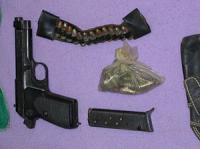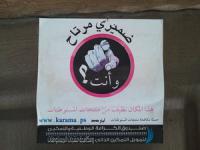-
Colombian government, FARC agree on a new peace deal
The government of Colombia and the leftist FARC guerrillas have agreed on a new peace deal aiming to broaden popular support after Colombian voters, in a referendum on 2 October, narrowly defeated an earlier agreement to end the 52-years conflict. The text of the new agreement was not immediately published, by the president, Juan Manuel Santos, laid out the changes in a televised speech. Under the new agreement, FARC commits to declare and hand over all the organization’s assets, to be used to compensate the victims of the conflict. More than 220,000 people were killed in the conflict, and nearly eight million people were forces out of their homes. The compensation clause was not part of the original accord, but was one of the main demands of the anti-accord campaign.
-
-
More U.K. children call Childline help-line over terrorism anxiety
Children as young as nine have contacted Childline “petrified” about the prospect of a terror attack. The U.K. National Society for the Prevention of Cruelty to Children’s (NSPCC) 24/7 service said it had handled 660 counselling sessions since the November 2015 Paris attacks. Across the United Kingdom, one in five of the contacts to the service – which is free and anonymous — were from young people aged 11 or younger.
-
-
The new normal: one year since terror attacks, Paris is a city afraid and divided
It has been one year since the attacks on 13 November 2015 chilled all Parisians – Muslim, Christian, Jewish, and secular alike – to the core. In coordinated attacks on a football match and a music concert, 130 innocent civilians lost their lives, and hundreds more were injured. In Paris, a global hub for business, arts, diplomacy and culture, life is not the same as before. More than 6,500 soldiers are based in the Paris metropolitan area to help the local police, and Parisians have had to adjust to the sight of military uniforms patrolling subway stations, museums, major streets, and religious sites. The atmosphere of the city has grown tense, and residents have become jumpy.
-
-
Less crime, and fewer incarcerations: As New York became a safer city, prisons closed too

Overflowing prison populations and high rates of violent crime once made New York City a metaphor for the urban decay confronting America’s cities. But over the last two decades crime in the nation’s largest city has declined steeply, with murders plummeting from 2,200 in 1990 to 350 in 2015. New York City’s crime decline was coupled with a sustained and dramatic reduction in incarceration, allowing the state to close more than a dozen prisons and save tens of millions of dollars. New York is now not only the safest big city in the United States, but also one with the fewest incarcerations for its size.
-
-
IAEA says Iran has violated terms of nuclear agreement -- again
The UN’s nuclear watchdog, the International Atomic Energy Agency (IAEA), said Wednesday that for the second time, Iran has exceeded the 130 metric ton threshold for heavy water, which is used to cool reactors that can produce weapon-grade plutonium. In February, the IAEA has cited Iran for the first time for producing more heavy water than allowed by the nuclear deal.
-
-
Germany worries about Russian cyberattacks influencing German election
Chancellor Angela Merkel has said Russia could launch a cyberattack campaign in an effort to influence Germany’s general elections next year. “We are already, even now, having to deal with information out of Russia or with Internet attacks that are of Russian origin or with news which sows false information,” the German chancellor said. Hans-George Maassen, the director of Germany’s domestic intelligence agency, issued a formal warning earlier this year, saying that that the German government, business, educational facilities, and critical infrastructure were under “permanent threat” from Russian cyberattacks.
-
-
CyberSeek: An interactive resource for cybersecurity career information
The U.S. rapidly growing cybersecurity jobs market has many more openings available than trained workers to fill them. For example, there are 128,000 positions for “Information Security Analysts,” but only 88,000 workers currently employed in those positions — a talent shortfall of 40,000 workers for cybersecurity’s largest jobs. Jobs requesting cloud security skills remain open ninety-six days on average — longer than any other IT skill. NIST last week introduced CyberSeek, an interactive online tool designed to make it easier for cybersecurity job seekers to find openings and for employers to identify the skilled workers they need.
-
-
Future mischief: Russia’s disinformation campaign will continue after elections
The continuing dumping of e-mails which Russian government hackers stole from the Clinton campaign has led U.S. intelligence officials to worry that Russia will escalate its disinformation campaign after Election Day. A senior U.S. intelligence official said that Putin is not interested only in discrediting the legitimacy of Tuesday’s elections, but is eager to undermine the effectiveness of the next president, regardless of who he or she is. “Don’t think that the Russian activity was solely about the election, or about Trump,” the officials said. “It wasn’t. It was about their agenda, what they are trying to accomplish” in expanding Russia’s power and influence around the world.
-
-
Who’s Who in Mosul: A guide to the most important battle in the fight against ISIS
On 17 October, the Iraqi government officially declared its plans to liberate Mosul from the Islamic State, more than two years after the city was captured. Unfortunately, winning will require cooperation many different parties. The Shiite government of Iraq, as well as the country’s Shiite militias, both want to be involved in the recapture of Mosul. So do Sunni actors, which include Iraqi tribes, Turkey, and the Kurds. And then there are the forces of the Yazidis and Christians.
-
-
Mosul will fall – but it may take a bigger U.S. presence to force Islamic State out

The 5,000 ISIS paramilitaries deployed to defend Mosul will eventually lose to the 60,000-strong coalition forces arrayed against them. But a defeat in Mosul, or even in Raqqa, may not finish ISIS off. As IS moves away from being fixated on its caliphate, it is now embarking on more of a virtual existence – recruiting across the world with a focus on Western countries. And even if ISIS is in decline, what is happening in parallel is the rebirth of groups linked formally or informally to al-Qaeda which has reinvented itself as a less extreme entity that pays greater deference to local cultures and is promoting this in marked contrast to the sheer brutality of ISIS.
-
-
Loophole in Rhode Island law allows domestic abusers to keep firearms, despite risks

Courts in Rhode Island rarely require abusers to turn in their firearms, even when orders prohibit them from possessing firearms under federal law and there is evidence they pose a lethal risk to victims, according to new research. examined 1,609 case files of protective orders filed in Rhode Island Family and District courts from 2012 to 2014. “In Rhode Island, domestic abusers are rarely required to turn in their firearms — even when they are federally prohibited from possessing them,” said one researcher. “Addressing this gap in the state’s law could help prevent risk of gun violence to potential abuse victims.”
-
-
Russian nationalists tried to topple pro-West Montenegro government
Montenegro said that Russian nationalists were behind a coup attempt in Montenegro. The coups involved assassinating the pro-Western prime minister because of his government’s support for joining NATO, and install a pro-Russian coalition to run the country. Moscow has openly supported what it called the “patriotic parties” in Montenegro which oppose Montenegro becoming a member of NATO. Serbia has deported an undisclosed number of Russian diplomates and operatives who were monitoring the Montenegro prime minister’s movements from Serbian territory.
-
-
Boycott-Israel movement tainted by ties to terrorists, researchers find

The campaign to subject Israel to boycotts, divestment, and sanctions (BDS) is tainted by ties to the terrorist organization Popular Front for the Liberation of Palestine (PFLP), researchers from the Foundation for Defense of Democracies said. The PFLP, which was founded in 1967 as a Marxist-Leninist revolutionary group, is the second-biggest entity within the Palestine Liberation Organization (PLO). It has been designated a terrorist organization by the State Department since 1997.
-
-
When dictators die of natural causes, their regimes remain intact
A dictator’s death of natural causes rarely leads to regime change, according to a new study that comes as the remaining fifty-five authoritarian rulers currently in power are at least seventy years old and in various stages of declining health. The researchers have studied all seventy-nine cases of dictators dying in office between 1946 and 2012 and found the ruling regime remained intact through the following year 87 percent of the time.
-
-
How hard is it to rig an election?
How do you rig an election? Republican presidential nominee Donald Trump claims our system of elections are rigged – asserting that widespread voter impersonation exists, that large numbers of dead people vote, and that many noncitizens have successfully registered to vote and regularly do so. Don’t believe it. One roadblock to rigging the elections is the fact that the American system of election administration is hyper-localism. More than 5,000 municipal and county election officials administer elections across more than 8,000 local jurisdictions across the United States. Another roadblock is the sheer number of votes involved. Presidential elections generally prompt higher turnout than any other election — in the 2012 presidential election, 130 million people cast their ballots. The sheer size of the electorate, and the sheer number of different local jurisdictions, suggest that attempting to “rig” the system would require a level of coordination even greater than the coordination needed to “get out the vote” on Election Day itself. Such a vast conspiracy cannot possibly be concealed. All of this adds up to a system of election administration that is virtually impossible to penetrate in the name of massive fraud that would shift the results of an election. So don’t believe it when someone tries to tell you the vote is rigged.
-
More headlines
The long view
What Does Netflix’s Drama “Adolescence” Tell Us About Incels and the Manosphere?
While Netflix’s psychological crime drama ‘Adolescence’ is a work of fiction, its themes offer insight into the very real and troubling rise of the incel and manosphere culture online.
A Shining Star in a Contentious Legacy: Could Marty Makary Be the Saving Grace of a Divisive Presidency?
While much of the Trump administration has sparked controversy, the FDA’s consumer-first reforms may be remembered as its brightest legacy. From AI-driven drug reviews to bans on artificial dyes, the FDA’s agenda resonates with the public in ways few Trump-era policies have.
The Center Can Hold — States’ Rights and Local Privilege in a Climate of Federal Overreach
As American institutions weather the storms of executive disruption, legal ambiguity, and polarized governance, we must reexamine what it means for “the center” to hold.
How to Reverse Nation’s Declining Birth Rate
Health experts urge policies that buoy families: lower living costs, affordable childcare, help for older parents who want more kids
Foundation for U.S. Breakthroughs Feels Shakier to Researchers
With each dollar of its grants, the National Institutes of Health —the world’s largest funder of biomedical research —generates, on average, $2.56 worth of economic activity across all 50 states. NIH grants also support more than 400,000 U.S. jobs, and have been a central force in establishing the country’s dominance in medical research. Waves of funding cuts and grant terminations under the second Trump administration are a threat to the U.S. status as driver of scientific progress, and to the nation’s economy.
The True Cost of Abandoning Science
“We now face a choice: to remain at the vanguard of scientific inquiry through sound investment, or to cede our leadership and watch others answer the big questions that have confounded humanity for millennia —and reap the rewards.”
